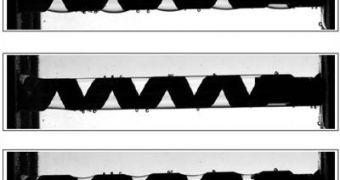Ever wondered how future astronauts will drink their coffees when they wake up? Don't say they will use cups, because they have already tried that and its not very funny to get hot coffee all over your face. On Earth, the powerful gravitational field solves pretty much of this problem. Liquids are contained into cups and kept there by the gravitational force, which also helps us while trying to pour it into another cup. But what about in low gravitation conditions? Well, in Earth's orbit for example, the gravitational force is only about 90 percent of that on the surface of the planet.
Not only that, but objects in the orbit are falling towards the Earth in a sideways motion, and the downwards component of the gravitational field is almost canceled, meaning objects are basically in a free fall and are not severely affected by gravity, thus they move inertially. Containing a liquid into a glass may prove extremely difficult, not to mention trying to pour some out of a bottle.
Scientists argue that a better 'cup' design would involve a corkscrew shape, which hold liquid inside it with the help of the tension force between the spiraling container and the fluid. The unique helical shape has been designed as a result of a study conducted by chemical engineer Brian Lowry, from the University of New Brunswick.
A second problem related to manipulating fluids in microgravity conditions is maintaining the smooth flow of the liquid, and is usually resolved by pressurizing the container holding it.
The helical shape of the container supporting the fluid helps in drawing the whole mass out of it, by creating thin ribbons of liquid. Ultimately, as it flows through the spiral support, the fluid will tend to redistribute along the support, making it easier to suck it all out in one go. The traditional cylindrical design prevents this, as its large volume enable the liquid to break the surface tension and separate into multiple fluid droplets before the whole mass is extracted.
Originally, the helical shape has been first suggested by David Thiessen from the Washington State University, while Brian Lowry tested the idea by simulating the microgravity environment on Earth with the help of liquids with equal densities.
On top of the obvious uses for such container designs, Lowry stated that the helical container shape could also be used in microgravity environments in heat exchangers and may have applications in nanotechnology experiments while trying to manipulate small amounts of fluids. At nanoscale, the gravitational force becomes irrelevant, and tension forces are dominant, so trying to work with fluids at nanoscale by implying classical techniques is like trying to balance a pencil on its tip.

 14 DAY TRIAL //
14 DAY TRIAL //